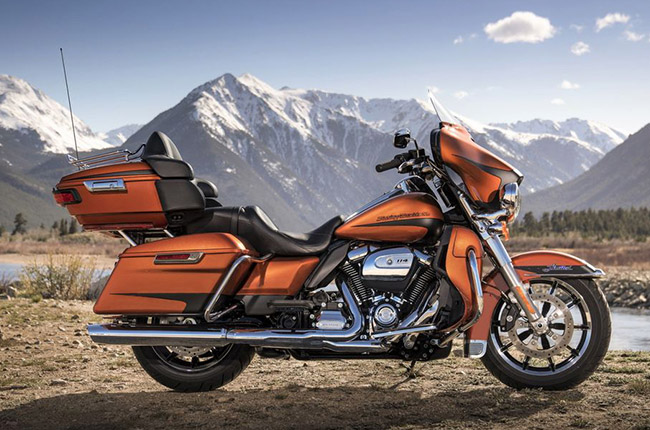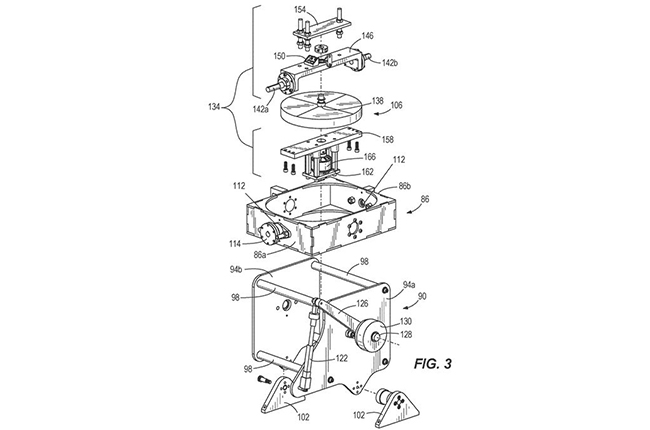Harley Davidson files a self-balancing motorcycle patent
It’s designed to keep a heavy Harley-Davidson from tipping over.

Harley-Davidson Motorcycles have been getting a lot of flack lately. With their dwindling sales and a change in leadership in management, it’s caused a lot of attention from the public and everyone is anticipating how they plan to bounce back. They are faced with two problems at the moment, an aging fan base, and the difficulty of attracting newer buyers. Its new CEO, Jochen Zeitz, wants to stick to its core products, American cruisers. However, his new strategy would still go back to his two problems, loyal Harley-Davidson fans are getting too old to handle a massive cruiser such as a Harley, and newer riders might find the motorcycle’s sheer size as a hindrance to handling, especially maneuvering at low speeds.
If there’s one thing Harley-Davidson could be admired for, it’s their dedication to finding innovative solutions through technology. They recently developed a rider-assistance system that could potentially eliminate the possibility of a low-speed tip-over and filed a patent for the new system. What’s even more amazing is that the whole self-balancing system can sit discretely inside the motorcycle’s top-box. The technology adds a gyroscope mechanism inside the motorcycle’s Tour-Pak which is designed to keep the bike upright particularly at lower speeds and disengages as the motorcycle picks up more speed when its aid would no longer be needed.

The system is a traditional, spinning-mass gyro — the sort of thing that was used fo guide the Appollo moon missions. It comprises of a high-seed flywheel mounted within a gimbal that allows it to rotate in two axes. The gyroscope itself is made up of a heavy flywheel that spins up to 20,000 RPM by an electric motor mounted in a gimbal which, during normal riding, allows it to freely moves in both roll and pitch axis. At low speeds, it comes into action by engaging a clutch that locks its roll axis to a lever connected to a computer-controlled linear actuator giving it the ability to tilt the spinning mass from side to side that creates a force strong enough to influence the entire bike. Tip sensors would also register when the bike starts to lean more on one side to make the computer and the actuator compensate for the lean.
In other words, for a novice rider who wants a Harley-Davidson cruiser but doesn’t have the years of experience to handle its sheer size, or for older riders who are no longer confident with their leg strength to try to hold up the bike to stop it from tipping over, this new technology will aid their riding experience, especially in handling its massive size. Whether or not this sort of technology would come into fruition and see some commercial application to the rest of the Harley-Davidson lineup, we will only have time to tell us what happens next. In the event that the design proves to work the way, they wanted it to, there is a chance that this patent could bring more innovation to the company’s motorcycles or even the industry in general.
Tagged Under
Related Articles
-
Harley-Davidson X350 and X500 make their way to Japan – Philippines next? / News
Harley-Davidson is launching the X350 and X500 in Japan. Would you like to see these mid-sized roadsters in the Philippines?
-
Harley-Davidson trademarks the Nightster 440 in India / News
Harley-Davidson has patented the Nightster 440 name in the Indian market, suggesting that the brand is working on a sportier version of the new X440.
-
Harley-Davidson unveils limited Fast Johnnie Editions as part of its Enthusiast Collection / News
Harley-Davidson has launched the limited Fast Johnnie Editions of the Low Rider ST, Street Glide ST, and Road Glide ST.
-
Harley-Davidson India releases more photos of the upcoming X440 / News
Harley-Davidson of India has dropped even more photos of the upcoming X440 small-displacement model.
-
Check out the new Harley-Davidson X440 slated for launch in the Indian market / News
Harley-Davidson has released images of the highly anticipated X440 developed in partnership with Indian company Hero MotoCorp.
Latest News
-
Suzuki Philippines celebrates 50-year milestone with One Suzuki Kick-Off Ride / News
Suzuki celebrates its 50th anniversary with the One Suzuki Kick-Off Ride
-
Honda shakes up the retro scooter game with the Giorno+ / News
Honda has released the Giorno+ 125 scooter in the Philippines starting at P101,900.
-
Royal Enfield Philippines inaugurates new flagship store at Brixton, Pasig / News
Royal Enfield has opened the doors to its new flagship dealership in Brixton, Pasig.










